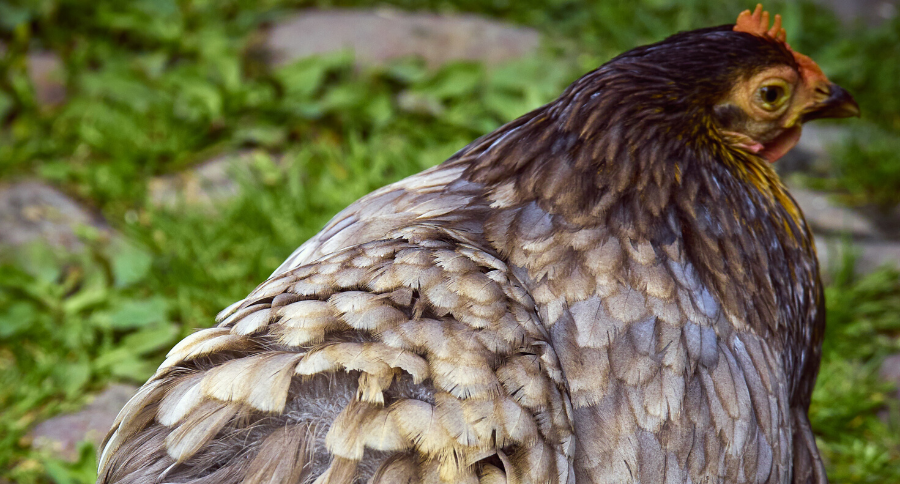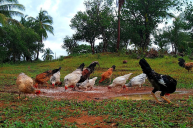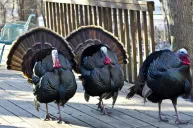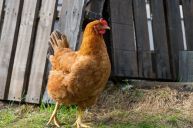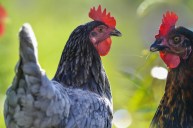Buckeyes are beautiful and they remind me of my one Rhode Island Red chicken. Unfortunately, Buckeyes lack color variations, which has made the breed less desirable over the years.
They were created in Warren, Ohio. Nettie Metcalf crossed Buff Cochins, Barred Rocks, and black-breasted red game birds to create the birds. There are currently less than 8 primary breeding flocks for Buckeyes in the United States and about 5,000 birds globally.
With that in mind, they're listed as threatened by the American Livestock Conservancy. This is reason enough to raise this bird in your flock.
Reason to love them
Buckeyes are the only American bred chicken that can claim to be exclusively bred by a woman.
For this reason, I'll be researching the breeders for spring chicks. They're also practical egg and meat producers.
History
Roy's Farm provides an overview of how this breed came about.
"Buckeye chicken is a dual-purpose breed that originated from Ohio, United States. The breed was developed by Mrs. Nettie Metcalf and named from Ohio's nickname of 'Buckeye State.' This is the only chicken breed known to have been developed by a woman. And, the Buckeye chicken is also the only one in the American Class to have a pea comb."
Her main goal was to develop a cold, hardy breed that could produce well in the Midwest winters.
Breed qualities
Morning Chores explains that since they were bred to be dual-purpose birds they're not small.
- A full-grown rooster weighs about 9 pounds while hens will weigh approximately 6.5 pounds.
- Buckeye hens are evenly tempered and docile birds with an occasional inclination to go broody.
- Roosters can be somewhat aggressive at times due to the game bird in their lineage. Yikes!
- They're bred for meat and egg production.
Egg production
Hens average about 200 eggs per year and do an especially good job producing eggs in the winter. Sign us up! Having birds that lay during winter is an added bonus.
What about egg color? Buckeye hens are good layers and lay a good number of brown eggs. The buckeye chicken likely lays beautiful eggs like our Rhode Island Reds and Orpingtons. I love our brown egg layers. They're also known to be very active and wonderful foragers which is perfect if you plan to free-range them. There are also bantam sized buckeyes if you're interested in smaller birds for your flock.
Know someone who would like to add this chicken breed to their flock? Tell us in the comments below!
